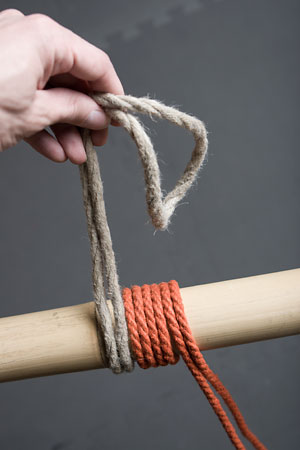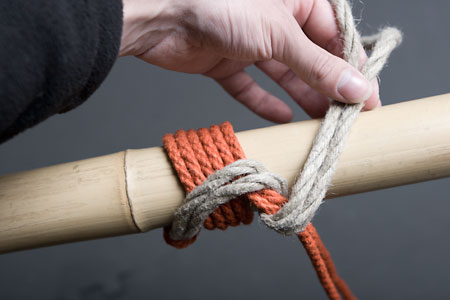The Somerville Bowline is not, technically, a bowline. Rather, it is actually based on ABOK 1445, sometimes later called the Myrtle Hitch. However, I call the cuff the Somerville Bowline, because its intent is to combine the speed of the Portuguese Bowline with the compactness of the French Bowline -- and it was invented in Somerville.
[Update: for videos of this tie, see here]
As a Single Column
Start as for most cuffs that use the bight as the working end, by taking a few wraps:

You'll notice I have a magic rope here that changes colors at the end. This is just to make it clearer what's going on -- don't freak out! You'll only be using one rope in reality.
OK, next, take the working (bight) end and wrap it 360 degrees around the standing (long) line, going in the natural/easiest direction (it has to be this particular direction! which just happens to be the most natural one, if you ask me):

Now, pull on the working end while leaving the standing line slack, to...